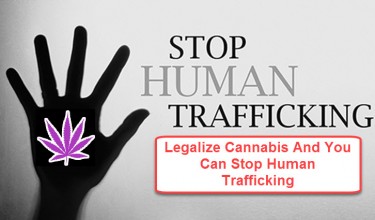Cannabis News
True or False – Legalizing Drugs Would Put an End to Human Trafficking?
Published
10 months agoon
By
admin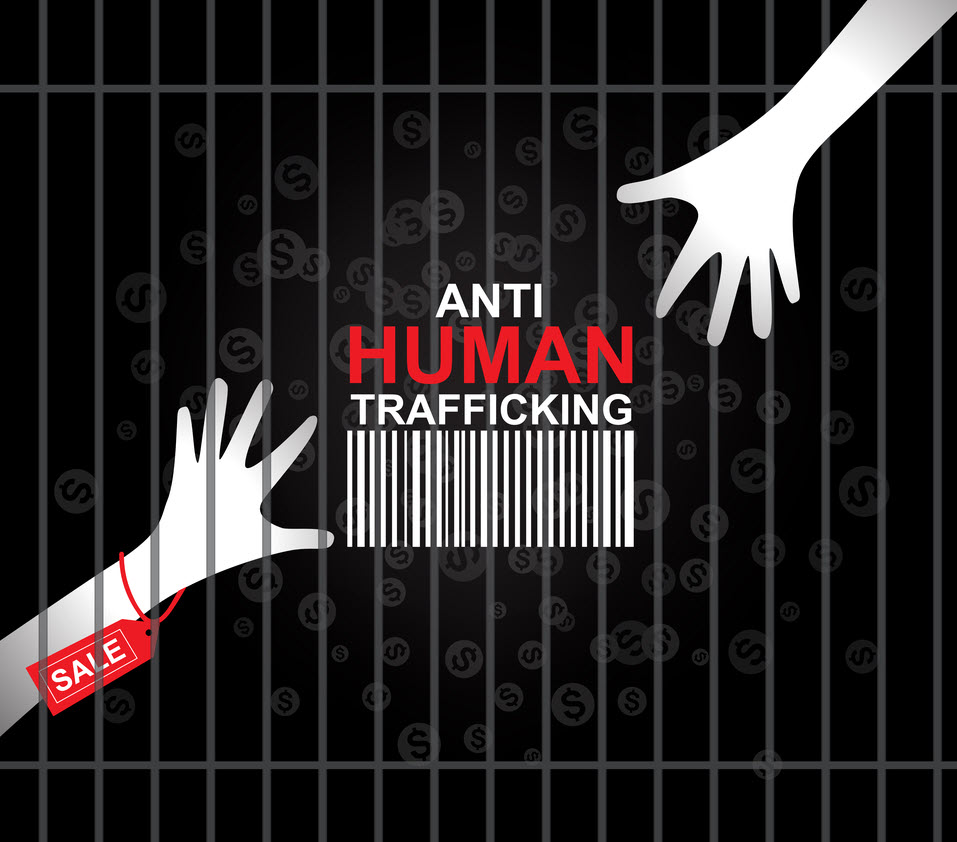
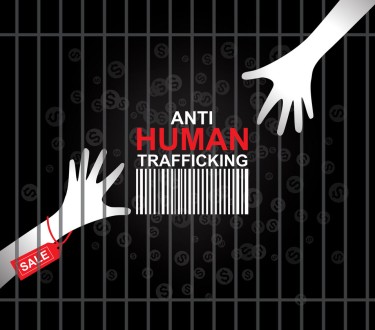
How to Stop Human Trafficking: Legalize Drugs!
The largest illicit market on the planet is not weapons, exotic animals, or even human beings – it’s drugs. Since 1971, when the United Nations amended its narcotic charter and essentially declared an international war on drugs, the global drug trade has only grown in size and complexity.
Despite the best efforts of law enforcement agencies worldwide over the past five decades, drugs have become more prevalent, more accessible, and far more dangerous.
From the streets of American cities to remote villages in Afghanistan, the drug trade has left a trail of addiction, violence, and corruption in its wake. It’s safe to say that after 75 years of futile efforts, drugs have definitively won the war.
But the illegal drug trade does more than line the pockets of criminals and cartels. It also serves as a shield for one of the most horrific crimes imaginable: human trafficking.
The same shadowy networks that smuggle cocaine and heroin across borders are often deeply intertwined with the traffickers who buy and sell human beings as chattel.
In this article, we’re going to explore the number one thing the world can do to stop human trafficking – legalize all drugs.
But we’re not talking about a free-for-all where anyone can buy anything at any time. Instead, we’ll lay out a nuanced approach to legalization and regulation designed to reduce the harms of drug abuse while focusing law enforcement resources on the fight against human trafficking.
By removing the profits generated by the illegal drug trade, we can strip away the financial incentives that fuel trafficking networks. And by redirecting policing efforts towards identifying and protecting victims rather than endlessly chasing drug dealers, we can make a real dent in this abhorrent practice.
It won’t be easy, and it won’t happen overnight.
But if we’re serious about ending human trafficking, we need to start by rethinking the failed war on drugs. The evidence is clear – prohibition has only made the problem worse. It’s time for a new approach, one grounded in public health, human rights, and common sense. Let’s dive in.
Since the adoption of the Single Convention on Narcotic Drugs in 1961 and the subsequent declaration of the war on drugs in 1971, the illegal drug trade has exploded in size and reach. What was once a relatively small-scale, localized problem has morphed into a global behemoth with tentacles in every corner of the planet.
According to estimates from the United Nations Office on Drugs and Crime (UNODC), the global drug trade is now worth between $426 and $652 billion annually. That’s more than the GDP of most countries and represents a staggering increase from the pre-1961 era when the trade was a fraction of its current size.
But it’s not just the scale of the trade that has changed – it’s also the nature of the drugs themselves. In response to prohibition efforts, drug producers and traffickers have become incredibly innovative, constantly developing new synthetic substances to evade detection and skirt the law.
One prime example is “Spice,” a synthetic cannabinoid that mimics the effects of marijuana but is infinitely more dangerous. Because Spice is unregulated and its chemical composition is constantly changing, users have no way of knowing what they’re ingesting. The result has been a wave of overdoses and deaths that have devastated communities around the world.
Meanwhile, the financial institutions that are supposed to be safeguarding the global economy have become complicit in the illegal drug trade. Banks like HSBC have been caught repeatedly laundering money for drug cartels, yet they’ve only been slapped with fines rather than facing criminal charges.
In 2012, HSBC admitted to laundering nearly $900 million for the notorious Sinaloa Cartel in Mexico, yet no executives went to jail. Instead, the bank paid a fine of $1.9 billion – a mere slap on the wrist compared to the profits it had reaped from its illicit activities.
This double standard is a stark reminder of the inherent inequities of the war on drugs. While low-level dealers and users face harsh prison sentences, the wealthy and well-connected can profit from the trade with impunity.
Perhaps most tragically, drug prohibition has created a black market where profits are prioritized over safety. With no regulation or quality control, drug producers often cut their products with dangerous adulterants or increase potency to maximize profits. The result is a staggering number of drug-related deaths that could have been prevented with a more rational approach.
According to the CDC, over 93,000 Americans died from drug overdoses in 2020 alone – a record high. Many of those deaths were caused by fentanyl, a synthetic opioid that has become increasingly common in the illegal drug supply.
The numbers don’t lie – the war on drugs has been an abject failure. If the goal was to reduce drug use and combat criminal organizations, then by every empirical measure, it has fallen short. Continuing to support a failed system is not only misguided – it’s actively causing harm to individuals and communities around the world. It’s time for a new approach.
While the illegal drug trade may grab more headlines, human trafficking is a shockingly prevalent and profitable criminal enterprise. In fact, it’s the second largest illicit market in the world, generating an estimated $150 billion in annual profits for traffickers.
The scale of human trafficking is staggering. According to the International Labor Organization (ILO), there are over 40 million victims of human trafficking worldwide, with women and girls accounting for 75% of those trafficked. Perhaps most disturbingly, one in four victims of trafficking are children.
These victims are bought, sold, and exploited for a variety of purposes, including forced labor, domestic servitude, and commercial sexual exploitation. The primary motivations for traffickers are greed and the desire for power and control over others but mostly supply and demand.
While trafficking occurs in virtually every country, some regions are particularly prone to this horrific practice. Asia and the Pacific region account for the largest number of victims, with 15.4 million people trafficked in that region alone. Africa and Europe also have high rates of trafficking, with millions of victims in each region.
So who are the buyers driving this brutal trade? While there is no single profile, research suggests that many purchasers of trafficked persons are individuals with wealth and power. From corrupt politicians to wealthy businessmen to high-ranking officials, the demand for trafficked persons often comes from the upper echelons of society.
The infamous case of Jeffrey Epstein is a prime example. Epstein, a wealthy financier with connections to powerful figures in politics and business, was accused of trafficking and sexually abusing dozens of underage girls. He allegedly used his private island in the Caribbean as a base for his trafficking operations, flying in girls on his private jet to be exploited by him and his associates.
The Epstein case raises disturbing questions about the priorities of our justice system. While law enforcement agencies pour billions of dollars into fighting the war on drugs, how much attention and resources are being devoted to combating human trafficking?
The answer is that U.S. government spends roughly 64 times more on fighting drug trafficking than it does on combating human trafficking. ($35.6 billion in 2021 for drug trafficking vs $560 for human trafficking)
Could it be that the focus on drugs serves as a convenient distraction from the uncomfortable reality that some of the most powerful people in our society are complicit in the buying and selling of human beings? Is the war on drugs a way to protect the interests of the wealthy and influential while ignoring the suffering of trafficking victims?
These are not easy questions to answer, but they must be confronted if we are serious about ending human trafficking. It’s not enough to pay lip service to the issue or to prosecute the low-level traffickers who are often victims themselves. We must be willing to hold the buyers and enablers of trafficking accountable, no matter how powerful they may be.
The numbers don’t lie – human trafficking is a massive and growing problem that demands our attention and action. We cannot continue to turn a blind eye to the suffering of millions of victims around the world. It’s time to prioritize the fight against trafficking and to hold those who profit from this heinous crime accountable, no matter who they are.
The legalization of drugs is a complex and controversial issue that requires a nuanced, evidence-based approach. Simply declaring all drugs legal without any restrictions or regulations would be irresponsible and potentially dangerous. Instead, we must look to science and best practices to guide our policy decisions.
First and foremost, it’s important to recognize that not all drugs are created equal. Some substances, like fentanyl, are highly addictive and can be lethal in very small doses. These drugs should not be readily available to the general public and should be tightly controlled.
However, that doesn’t mean we should continue to criminalize addiction. Instead, we could follow the model pioneered by Switzerland in the 1990s, which provided heroin to addicts for free in designated clinics. This approach may seem counterintuitive, but it has proven to be remarkably effective in reducing the harms associated with drug use.
By providing a safe, regulated supply of heroin to addicts, the Swiss government was able to reduce disease transmission, overdose deaths, and crime associated with the illegal drug trade. Addicts were able to access the drug they needed without resorting to desperate measures, and many were eventually able to wean themselves off heroin entirely.
For other drugs like cannabis, LSD, and psilocybin, the risks of addiction and overdose are much lower. While these substances can still be abused, the vast majority of users do not develop problematic use patterns or experience significant harms.
In these cases, legalization and regulation may be the most sensible approach. By allowing the sale of these drugs to adults in licensed dispensaries, we can reduce the harms associated with the illegal market, generate tax revenue for prevention and treatment programs, and free up law enforcement resources to focus on more serious crimes.
Of course, legalization is not a panacea, and there will undoubtedly be challenges and unintended consequences along the way. But the alternative – continuing to pour billions of dollars into a failed war on drugs while neglecting the scourge of human trafficking – is simply unacceptable.
Consider this: the United States currently spends around $35 billion per year on drug interdiction and enforcement efforts, while allocating just $560 million to combat human trafficking. That means we spend over 60 times more on fighting the drug trade than we do on fighting the buying and selling of human beings.
By legalizing and regulating drugs, we could redirect those resources towards ending human trafficking and supporting its victims. The profits generated from the legal drug trade could be used to fund robust prevention, treatment, and recovery programs, while law enforcement could focus on dismantling trafficking networks and bringing perpetrators to justice.
It’s time to acknowledge that our current approach to drugs has failed by every metric. Despite decades of aggressive enforcement and trillions of dollars spent, drugs are more available, more potent, and more dangerous than ever before. Meanwhile, human traffickers operate with near impunity, exploiting the most vulnerable members of our society for profit.
We need a new approach, one that is grounded in science, compassion, and human rights. By legalizing drugs and focusing our resources on ending human trafficking, we can reduce the harms associated with both issues and build a more just and equitable society for all.
It won’t be easy, and there will undoubtedly be setbacks along the way. But the alternative – continuing down the path of prohibition and neglect – is simply not an option. We owe it to the victims of trafficking and addiction to do better, and to create a world where every person can live with dignity and freedom from exploitation.
TRAFFICKING HUMANS OVER DRUGS, READ ON…
You may like
-


Cannabis Can Help A Sore Throat
-
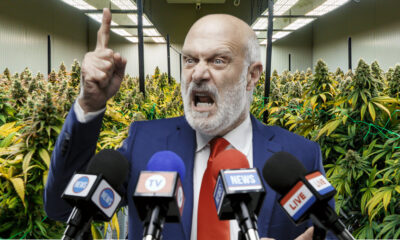

Cannabis and the Authoritarian State
-


As cannabis consumer tastes evolve, industry must look beyond potency
-


Article: Early 2025 Empire State Psychedelic Policy Roundup
-
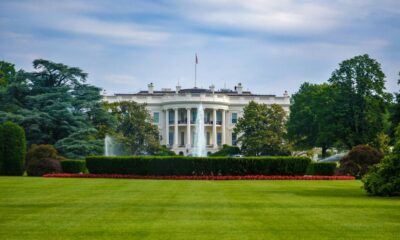

White House Finally Comments On Marijuana Industry
-


Stop Using Bat Poop to Fertilize Your Weed Plants Immediately, Here is Why…


Cannabis and the Authoritarian State
Cannabis has been legal for longer than it has been illegal. Let that sink in for a minute. For thousands of years, humans cultivated and consumed cannabis freely across civilizations and continents. It wasn’t until the early 1900s that we witnessed a massive push to drive hemp and cannabis into the black market, primarily due to industrial competition from petrochemicals, pharmaceuticals, and other industrial applications.
What makes cannabis so threatening to powerful interests? For starters, hemp and cannabis are highly versatile crops with over 50,000 different uses, from medicine to textiles to fuel. Even more remarkable is how this plant is hardwired to work with the human body through our endocannabinoid system—a biological network we didn’t even discover until the 1990s.
Perhaps most threatening of all is that cannabis is insanely easy to grow. This means that if the plant helps you with a particular physical ailment, you have the ability to grow your own medicine indefinitely. No insurance premiums, no wait lists, no pharmaceutical middlemen—just you cultivating your own healing directly from the earth.
Authoritarians do not like this, not one bit. When people can meet their own needs independently, power structures lose their grip. When citizens can think differently without permission, control systems begin to fail. So today, we’re going to look at the interesting relationship between authoritarianism and cannabis, and how this humble plant plays a key role in keeping you free.
We’ve already established the versatility of cannabis, but there’s another element that those old D.A.R.E. PSAs inadvertently reveal about what authoritarians think about cannabis. I’m talking, of course, about “behavior.” You see, in an authoritarian system, you and I are but cogs in the machine. We’re the expendables who should be proud to work ourselves to death for our “fearless leaders.”
This is precisely why certain ideas, philosophies, religions, movements, books, and substances are typically banned in authoritarian regimes. Take North Korea as an example: everything from the type of television citizens watch to the music they hear is a tightly spun spell designed to keep the populace in check. While they don’t have explicit laws against hemp (they actually grow it industrially), smoking psychoactive cannabis is strictly forbidden.
Contrast this with places like Malaysia, where you can get up to 5 years for possessing just 20 grams of cannabis, and even face the death penalty depending on the situation. These authoritarians don’t play around when it comes to cannabis because they know it affects the behavior of their populace in ways they can’t control.
The question becomes: what behavior do they fear so much that cannabis produces within the individual?
The answer is a critical mind. People who consume cannabis often begin to question their own belief systems. Most regular users undergo some transformation in their values and perspectives. Cannabis has a unique way of helping people see beyond cultural programming and think outside established paradigms. It can make the familiar strange and the strange familiar—a psychological state that’s antithetical to authoritarian control.
This independent thinking runs counter to the narrative of authoritarians who wish to maintain a tight grip on social consciousness. If even 10% of a population begins to pivot in their behavior within a regime, it can have massive ripple effects. Just look at cannabis in the US—it went from being demonized to being embraced by the majority in less than 80 years, despite massive propaganda efforts.
For authoritarians, psychoactive cannabis isn’t primarily a threat to public health and wellbeing—it’s a threat to the health and wellbeing of authoritarianism itself. When people start thinking differently, they start living differently. When they start living differently, they start demanding different. And that’s the beginning of the end for any system built on unquestioning obedience.
Beyond the threat to thought control, there’s another reason why drugs in general remain illegal: the state can use prohibition as a weapon against the populace. This isn’t conspiracy theory—it’s documented history.
Take Nixon’s war on drugs. His domestic policy chief, John Ehrlichman, later admitted: “We knew we couldn’t make it illegal to be either against the war or black, but by getting the public to associate the hippies with marijuana and blacks with heroin, and then criminalizing both heavily, we could disrupt those communities.” Nixon essentially placed cannabis on the Controlled Substances Act because he needed an excuse to shut down anti-war protests and target Black communities.
Since hippies and anti-war protesters were smoking “freedom grass,” making it illegal would circumvent their freedom of speech and freedom of assembly, and more importantly—turn free citizens into state property. It’s a win-win if you’re an authoritarian looking to silence dissent.
Then there’s the whole “boogeyman” complex that prohibition creates. We’re told “drug dealers” are roaming the streets preying on innocents, giving them “marihuanas” so they can do vile things. What the government conveniently leaves out is how the banks these “dealers” use to launder their money remain untouched. They don’t mention the shadier dealings of law enforcement either—like running guns into Mexico (eventually leading to the death of one of their own), or spraying poison on crops, killing and hospitalizing people because, you know…”Drugs are bad!”
Authoritarians cannot let go of the value that keeping the most widely used illicit substance in the world illegal provides them. This explains why the US hasn’t federally legalized cannabis despite nearly 80% of Americans supporting some form of legalization. It’s not because they don’t have enough research or that they’re genuinely concerned about public health—it’s because prohibition gives them all the privileges of violating constitutional rights while siphoning money into their coffers.
Drug prohibition creates a perpetual enemy that can never be defeated, allowing endless justification for surveillance, militarized police, asset forfeiture, and expansion of state power. What authoritarian could resist such a convenient tool?
Cannabis is a plant. You can’t make nature illegal—it’s counter to the human experience. When governments attempt to criminalize a naturally occurring organism that humans have cultivated and used for thousands of years, they reveal the absurdity of their position and the limits of their authority.
While the United States isn’t a full-on authoritarian state (yet), the truth is that many authoritarian elements have played out over the years. You only need to look as far as the war on drugs to see how the state utilizes prohibition as a weapon to their advantage. From no-knock raids to civil asset forfeiture to mass incarceration, drug laws have erected a parallel legal system where constitutional protections often don’t apply.
The fundamental truth is that cannabis is not only versatile and medicinal, it gives you back your autonomy in multiple ways. It helps you think for yourself. It allows you to grow your own medicine. It connects you with a plant that humans have used ceremonially, medicinally, and industrially throughout our history. And this autonomy is something authoritarians cannot stand—free individuals who know how to think beyond the narratives they’re fed.
Cannabis doesn’t just get you high—it offers a perspective from which the absurdities of prohibition become glaringly obvious. Perhaps this is why, as state after state legalizes, we’re witnessing the slow but steady unraveling of one of the most enduring authoritarian policies in American history.
So if you count yourself among those who value freedom of thought and bodily autonomy, who believe that nature doesn’t require government permission, and who understand that true liberty includes the right to explore your own consciousness—well, maybe it’s time to toke one up for freedom!
LEGALIZING CANNABIS IS NOT ENOUGH, READ ON..
Cannabis News
Stop Using Bat Poop to Fertilize Your Weed Plants Immediately, Here is Why…
Published
2 days agoon
April 1, 2025By
admin

Don’t Fertilize Your Weed with Bat Poop
Fertilization is a critical step for growing healthy marijuana plants.
They help provide essential nutrients for marijuana in various stages of growth, while promoting plant growth. There are dozens of different fertilizers to choose from in the market; growers can choose based on budget, nutrients needed, location, season, and much more. But not all fertilizers are made equally – of course, some are of better quality than others.
That said, there are some rather unusual fertilizers that can be used on plants. These may include, but are not limited to: coffee, milk, grass clippings, banana peels, fish tank water, potato water, and even urine! Yes, it does sound strange, but to gardening enthusiasts, there is nutritional value to be found in each of these things, which can make them suitable fertilizers depending on the circumstances.
For example, grass clippings make excellent mulch and can provide potassium, nitrogen, and phosphorus. Urine is a potent source of nitrogen as well as phosphorus. Banana peels are rich in calcium, which is excellent for promoting root growth while helping supply oxygen to the soil.
But what about bat poop? Also known as guano, bat poop has been said to work as a plant fertilizer because it’s rich in nitrogen, potassium, phosphorus, and other nutrients. Unfortunately, using bat poop as a plant fertilizer can also be dangerous. So if you don’t really know what you are doing, bat poop as a fertilizer can be extremely risky.
Bat Poop Fertilizer Kills 2 NY Men
On December 2024, news of two men hailing from Rochester, New York, dying went viral.
The cause of death was dangerous fungus, in the bat poop that they were using to fertilize their marijuana plants. Both men grew their own marijuana plants for medical consumption, but unfortunately developed histoplasmosis after breathing toxic fungal spores from the guano.
One of the men was aged 59 years old; he bought bat poop online to use as fertilizer for his plants. Meanwhile, the other was a 64-year-old male who found guano in his attic, then decided to use it to fertilize his cannabis plants. They both developed similar symptoms, including chronic coughs, fever, severe weight loss, and respiratory failure. The case was also discussed in the Open Forum Infectious Diseases medical journal.
Is there a safe way to use bat poop as fertilizer? If you ask me, I truly can’t understand why one would use guano as fertilizer when there are so many other proven safe alternatives out there that are simply not as risky. According to the University of Washington, one must always wear a dust mask each time you open a bag containing soil amendments. That’s because a mask will greatly decrease the chances of breathing in fungal spores, which could be potentially dangerous. They also go on to explain that yes, guano is indeed used as fertilizer for its valuable nitrogen content but it still isn’t without its own risks, particularly of developing Histoplasma – the same condition that killed the two men.
Make Your Own Safe Fertilizers At Home
There are many other safe, affordable – and even free – fertilizers you can feed your marijuana plants with. It doesn’t have to cost a fortune nor does it have to be risky to your health.
Check out these easy, low-cost, DIY fertilizers for weed:
-
Coffee grounds are abundant in nitrogen, which makes it perfect for the vegetative stage of marijuana plants. They are also a fantastic source of organic materials and green waste, which contain other vital nutrients. When the coffee grounds decompose, they create soil aggregates that improve soil aeration and its water retention capabilities.
Mix around 2 grams of coffee ground for every liter of soil. Measuring its pH levels is also helpful, since you want it to be between 6 to 6.5
-
Crushed eggshells are a great way to ensure no eggshells go to waste. It’s rich in calcium plus other minerals that are effective in improving overall plant structure, health, and growth. In fact, so many gardeners and farmers commonly use crushed eggshells to help boost plant growth – and it will work just as well for marijuana plants.
They’re really easy to use, too! Just mix eggshells into the soil, or steep them into water then pour into the soil for a calcium-packed feed.
-
Banana tea or water is rich in potassium and magnesium, making it perfect as a feed during the marijuana plant’s flowering stage. You can use banana peels differently: with 3 to 5 banana peels, soak it in water for 2 days. Then you can use the water on your plants, and even leave the banana peels as compost for your garden.
-
Wood ash from your fireplace or other sources is a great source of phosphorus and potassium. Simply sprinkle some wood ash over marijuana during the final flower phase. Just use 1 or 2 grams of ash for every liter of substrate. Be careful not to use too much wood ash, or it can make the soil too alkaline.
-
Animal manure, such as those from cows, rabbits, or horses, make excellent organic fertilizers. Just be sure that they’re composed properly so that you avoid introducing weed seeds, or pathogens.
These low-cost fertilizers are also natural and effective. There’s no reason for you to turn to bat poop as fertilizer, even if you’re in a bind.
Conclusion
Guano or bat poop is a poor choice of fertilizer if you don’t know what you are doing. It’s risky and potentially dangerous – just not worth it. Instead, fertilize your marijuana plants with these options mentioned.
BEST POOP FOR CANNABIS PLANTS, KEEP READING…
Cannabis News
Getting THC Edibles in Your Edible Arrangement?
Published
4 days agoon
March 30, 2025By
admin
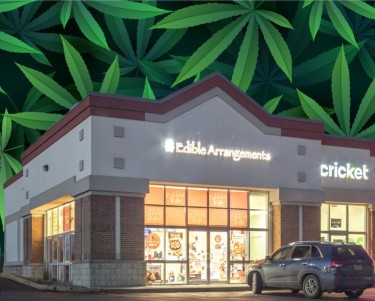
Edible Arrangements Leans into Intoxicating Hemp Products: A Strategic Expansion
Edible Arrangements, a brand renowned for its vibrant fruit bouquets and sweet treats, is embarking on a bold new venture into the hemp and THC-infused edibles market. Through its parent company, Edible Brands, the company has launched Edibles.com, an e-commerce platform offering a variety of hemp-based products such as THC-infused beverages, gummies, and snacks. This strategic move taps into the burgeoning demand for cannabis-related wellness products and reflects a deliberate expansion beyond traditional offerings.
Introduction to Edible Arrangements and Its New Venture
Edible Arrangements was founded in 1999 by Tariq Farid, who envisioned a unique way to gift fresh fruit arrangements that were both visually appealing and delicious. Over the years, the company has grown to become a global brand with hundreds of locations across the United States and internationally. However, the company’s latest initiative marks a significant departure from its traditional fruit-based offerings, signaling a broader strategic shift towards becoming a comprehensive food, health, and wellness company.
The New Venture: Edibles.com
Edibles.com debuted on March 20, 2025, starting operations in Texas with ambitious plans to expand rapidly across Southeastern states like Florida and Georgia. The platform is designed to cater to consumers aged 21 and older, providing low-dose THC products that comply with the 2018 Farm Bill, which legalized hemp containing less than 0.3% THC by dry weight. Select products will also be available for nationwide shipping where legally permitted, leveraging the company’s existing logistics infrastructure.
Product Lineup
The initial product lineup includes a range of THC-infused beverages, gummies, and snacks. These products are designed to appeal to both seasoned cannabis users and newcomers looking for low-dose, accessible options. The company emphasizes the importance of quality and safety, ensuring that all products undergo rigorous testing to meet high standards of purity and potency.
Strategic Alignment and Market Potential
The move into the infused edibles market aligns with Edible Brands’ vision of becoming a broader food, health, and wellness company. CEO Somia Farid Silber highlighted that the infused edibles market is a fast-growing sector with high consumer demand for safe and reliable products. The company is leveraging its extensive franchise network to deliver these items while planning to open brick-and-mortar stores under the Incredible Edibles brand.
Market Trends and Consumer Demand
The cannabis industry, particularly the segment focused on hemp and THC-infused products, has seen exponential growth in recent years. This growth is driven by increasing consumer interest in wellness and recreational products, as well as evolving legal landscapes that have opened up new markets. Edible Arrangements is positioning itself to capitalize on this trend by offering products that cater to both health-conscious consumers and those seeking unique gifting options.
Challenges and Opportunities
While this expansion offers significant growth potential, it also comes with challenges such as navigating varying state regulations and ensuring product safety and quality. The company aims to address these issues through robust infrastructure and consumer advocacy. Thomas Winstanley, a cannabis industry veteran leading Edibles.com, emphasized the company’s unique position to drive innovation in this emerging market.
Regulatory Challenges
One of the primary challenges facing Edible Arrangements is the complex regulatory environment surrounding cannabis products. Laws regarding the sale and distribution of THC-infused products vary significantly from state to state, requiring the company to adapt its operations to comply with local regulations. This includes ensuring that products meet specific THC content limits and are marketed responsibly.
Quality Control and Safety
Another critical challenge is maintaining high standards of quality and safety across all products. Edible Arrangements is investing heavily in testing and quality assurance processes to ensure that all products meet stringent safety standards. This includes partnering with reputable suppliers and implementing rigorous testing protocols to verify the potency and purity of all THC-infused items.
Consumer Education and Advocacy
As part of its strategy, Edible Arrangements is also focusing on consumer education and advocacy. The company recognizes that many consumers are new to cannabis products and may have questions about usage, dosage, and safety. To address this, Edibles.com will provide comprehensive product information, dosage guidelines, and resources for consumers to learn more about the benefits and risks associated with THC-infused products.
Marketing Strategy
Edible Arrangements plans to leverage its existing brand recognition and customer loyalty to promote its new line of hemp-based products. The company will utilize social media, email marketing, and targeted advertising to reach its target audience. Additionally, partnerships with influencers and cannabis industry experts will help build credibility and drive awareness about the brand’s entry into this new market.
Future Expansion Plans
In the coming months, Edible Arrangements plans to expand its operations beyond Texas, targeting key markets in the Southeast. The company is also exploring opportunities to open physical stores under the Incredible Edibles brand, which will offer a curated selection of THC-infused products alongside traditional Edible Arrangements items.
Incredible Edibles Stores
The Incredible Edibles stores will serve as a unique retail experience, combining the company’s traditional fruit arrangements with its new line of hemp-based products. This format will allow customers to explore and purchase THC-infused items in a welcoming and educational environment. The stores will also host workshops and events focused on cannabis education and wellness, further enhancing the brand’s position as a leader in this emerging market.
Conclusion
Edible Arrangements’ foray into the hemp and THC-infused edibles market marks a significant strategic shift for the company. By leveraging its brand recognition and logistical capabilities, Edible Arrangements is poised to become a major player in this rapidly growing sector. While challenges exist, the company’s commitment to quality, safety, and consumer education positions it well for success in this new venture.
As the cannabis industry continues to evolve, Edible Arrangements’ entry into this market underscores the broader trend of mainstream brands embracing cannabis-related products. This move not only expands the company’s offerings but also reflects a broader cultural shift towards greater acceptance and normalization of cannabis use.
HEMP-DERIVED THC DELIVERIES ARE HERE, READ ON…

Cannabis Can Help A Sore Throat

Cannabis and the Authoritarian State

As cannabis consumer tastes evolve, industry must look beyond potency

Article: Early 2025 Empire State Psychedelic Policy Roundup

White House Finally Comments On Marijuana Industry

Stop Using Bat Poop to Fertilize Your Weed Plants Immediately, Here is Why…

The History Behind April Fool’s Day

Star signs and cannabis strains: April 2025 horoscopes

Does Comfort Food Actually Help

Connect to cannabis history with three legacy strains from Paradise Seeds

Distressed Cannabis Business Takeaways – Canna Law Blog™

United States: Alex Malyshev And Melinda Fellner Discuss The Intersection Of Tax And Cannabis In New Video Series – Part VI: Licensing (Video)

What you Need to Know

Drug Testing for Marijuana – The Joint Blog

NCIA Write About Their Equity Scholarship Program

It has been a wild news week – here’s how CBD and weed can help you relax

Cannabis, alcohol firm SNDL loses CA$372.4 million in 2022

A new April 20 cannabis contest includes a $40,000 purse

Your Go-To Source for Cannabis Logos and Designs

UArizona launches online cannabis compliance online course
Trending
-

 Cannabis News2 years ago
Cannabis News2 years agoDistressed Cannabis Business Takeaways – Canna Law Blog™
-

 One-Hit Wonders2 years ago
One-Hit Wonders2 years agoUnited States: Alex Malyshev And Melinda Fellner Discuss The Intersection Of Tax And Cannabis In New Video Series – Part VI: Licensing (Video)
-

 Cannabis 1012 years ago
Cannabis 1012 years agoWhat you Need to Know
-

 drug testing1 year ago
drug testing1 year agoDrug Testing for Marijuana – The Joint Blog
-

 Education2 years ago
Education2 years agoNCIA Write About Their Equity Scholarship Program
-

 Cannabis2 years ago
Cannabis2 years agoIt has been a wild news week – here’s how CBD and weed can help you relax
-

 Marijuana Business Daily2 years ago
Marijuana Business Daily2 years agoCannabis, alcohol firm SNDL loses CA$372.4 million in 2022
-

 California2 years ago
California2 years agoA new April 20 cannabis contest includes a $40,000 purse



